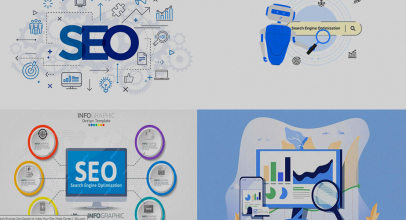A veterinary clinic is a special world where science and tenderness meet, where tiny paws and beating hearts rely on humans for care. And today, this world must live not only inside the clinic walls — but also on screens, where pet owners laugh at funny cat videos, share puppy photos, and search anxiously for answers when their furry friend suddenly acts strange. That’s why SMM for a veterinary clinic isn’t just “a marketing trend” anymore — it is a vital lifeline for communication and growth.
Take a look at an example of a vet-focused resource filled with warmth and helpful guidance: https://vetspayandneutred.com/ — a space where every word feels calm and reassuring, as if saying: “You’re not alone — help is near.”
Social media isn’t just a digital showcase. It’s an emotional waiting room — a place where people come for comfort, answers, and a sense of community. When a pet owner scrolls through their feed and sees a kind post from a veterinary clinic, a recovery story, or a gentle piece of advice from a doctor, something shifts inside them. Even before they follow your page, they remember your tone. Every post, every comment, every shared wagging tail becomes a bridge toward future appointments.
Why SMM matters so much for a veterinary clinic

Pet owners live in social media now — they laugh, they learn, they worry, they seek recommendations, and they make medical decisions based on trust they build online.
SMM helps a veterinary clinic
-
build trust before a pet even needs help
-
demonstrate expertise in a warm, human way
-
gain visibility in your local area
-
answer urgent questions in real time
-
show real success stories and happy furry patients
People turn to those who comfort, support, and speak with kindness — even in comment sections.
Additional context
Social media is a conversation, not a brochure. Unlike websites or printed ads, here a clinic speaks — and listens. A gentle comment like: “Bring him in, we’ll take a look. Don’t worry — you’re doing the right thing,” can soothe a trembling heart instantly. Show up regularly, speak softly, and soon you become not just a clinic — but a trusted companion in a pet parent’s daily life.

SMM strategy for a vet clinic
Posting “cute animal photos” isn’t a strategy — it’s just noise without heart. True SMM begins with intention and structure.
What a strategy includes
-
setting clear goals
-
choosing the right platforms (Instagram, TikTok, Facebook)
-
planning content
-
using stories and short-form videos
-
building interactive conversations
-
responding to comments and messages
A strategy is like a treatment plan — organized, consistent, and tailored to needs.
Additional context
A strong strategy revolves not just around your clinic, but around people and their emotions. Pet owners often come not for answers — but for reassurance. Show wagging tails waiting for check-ups, little patients recovering after surgery, and the loving eyes of a veterinarian who truly cares. These moments build emotional loyalty — the kind that no advertisement can purchase.
What content works best for a veterinary clinic

Content is the heartbeat of SMM. It should be useful, soothing, real, and kind.
Content ideas
-
patient recovery stories
-
care tips for puppies and kittens
-
simple “what to do if…” guides
-
real photos of doctors and patients
-
behind-the-scenes clinic content
-
reviews of food, vitamins, and pet supplies
-
light pet humor (in moderation!)
Your content should feel like a calm vet saying, “We’ll handle this together.”
Additional context
Let every post leave a person thinking, “I feel calmer — I know what to do,” or “These people truly care.” Show drip stations, x-rays, vaccination moments, joy after recovery, a tail wagging as a dog goes home. People don’t fall in love with equipment — they fall in love with compassion.
How to build trust through social media
Trust is the foundation of veterinary medicine — without it, even expertise feels cold.
What builds trust
-
showing your team’s faces and personalities
-
real recovery stories
-
honest, simple medical explanations
-
video messages from doctors
-
kindness and gratitude in replies
A veterinarian isn’t just a doctor — they are a guardian of every furry life that enters their clinic.
Additional context
Share personal stories. Let a doctor describe how they once rescued a stray animal as a child. Let your assistant talk about the joy of seeing kittens eat on their own again after treatment. These human moments soften hearts and build relationships stronger than any advert.
How to promote a vet clinic on social media
Great posts alone don’t guarantee reach — visibility requires strategy.
Promotion tools
-
local targeted advertising
-
partnerships with pet stores and groomers
-
“pet of the week” photo contests
-
live Q&A streams with doctors
-
Reels and TikTok educational videos
-
geo-tags like “veterinarian near me”
Promotion isn’t shouting — it’s connecting the right stories to the right hearts.
Additional context
Open the door to your clinic virtually. Show the shy puppy who gains courage in the waiting room. Let followers see their pets featured in your stories. People love being part of something — and when they feel included, they become advocates for your brand.
Reviews and engagement
Every review is a love letter — and a proof of trust.
How to handle reviews
-
publish real thank-you messages
-
reply to questions in DMs
-
express genuine gratitude
-
“Patient of the week” posts
Engagement is the moment a person feels seen and valued.
Additional context
Every comment is a doorway — don’t leave it unopened. Even a short “thank you — we’re glad Bella is feeling better” turns a client into a loyal supporter. And a heartfelt message like “She was such a brave girl — give her a cuddle from us!” melts hearts and builds loyalty.
Mistakes to avoid
Common mistakes
-
overly clinical, cold tone
-
lack of real animal or staff photos
-
posting once a month
-
ignoring comments and DMs
-
trying to be “perfect” instead of real
People trust warmth more than perfection.
Additional context
Social media isn’t a medical encyclopedia — it’s a living diary. Don’t be afraid to show tiredness after a long shift, relief when a patient recovers, or a funny stubborn cat refusing to leave the carrier. Authenticity wins hearts — always.











